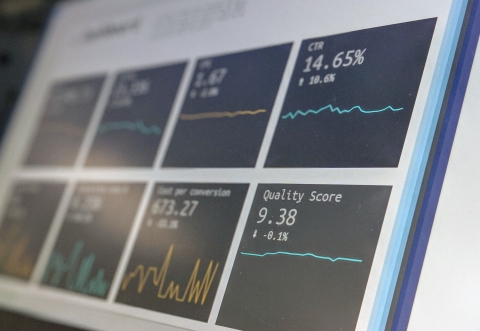The European Fund and Asset Management Association (EFAMA) has published its Investment Fund Industry Fact Sheet for December together with an overview of the net sales data for UCITS and AIFs in 2020.
Thomas Tilley, Senior Economist, commented on the December figures: “Net sales of UCITS and AIFs surged to an absolute record in December 2020, as investor confidence in a successful exit from the Covid-19 crisis continued to strengthen.”
The main developments in December are as follows:
• Net sales of UCITS and AIFs totaled EUR 174 billion, significantly up from EUR 78 billion in November.
• UCITS recorded net inflows of EUR 121 billion, compared to net inflows of EUR 75 billion in November.
o Long-term UCITS (UCITS excluding money market funds) recorded EUR 96 billion of net sales, up from 72 billion in November.
• Equity funds registered net inflows of EUR 59 billion, just as in November.
• Bond funds registered net sales of EUR 26 billion, compared to EUR 8 billion in November.
• Multi-asset funds recorded net inflows of EUR 9 billion, up from EUR 4 billion in November.
o UCITS money market funds recorded net inflows of EUR 25 billion, compared to EUR 4 billion in November.
• AIFs recorded net inflows of EUR 53 billion, significantly up from EUR 3 billion in November.
• Total net assets of UCITS and AIFs increased by 2.3% to EUR 18,815 billion.
Bernard Delbecque, Senior Director for Economics and Research, commented on the overall
developments of 2020: “The increase in net sales of UCITS in 2020, despite the uncertainty
surrounding the pandemic, is a strong vote of confidence for UCITS. Overall, investors remained confident in the ability of the European investment fund industry to generate returns and minimize risks. This is encouraging for the future because the success of the Capital Markets Union largely depends on the willingness of European households to shift a greater share of their savings into capital market instruments.”
The main developments in 2020 can be explained as follows:
Another year of strong sales and asset growth: despite sizeable net outflows in March following the outbreak of the Covid-19 pandemic, the 2020 full year results showcased strong performance across the board with net sales of UCITS and AIFs rising to EUR 622 billion in 2020, compared to EUR 542 billion in 2019. Net assets of UCITS and AIF increased by 5.6% to EUR 18,815 billion, compared to EUR 17,812 billion at end 2019. These trends can be explained by three main factors:
• Large scale fiscal and monetary packages to support the economy, which reassured investors and led to a strong rebound in financial markets in April and May.
• The liquidity management tools available to fund managers, which proved useful to manage redemption requests in March and allowed to avoid forced selling or suspensions for the vast
majority of funds
• The rapid development of Covid-19 vaccines, which raised hopes that the pandemic could be defeated despite the second wave and the emergence of Covid-19 variants. Strong demand for UCITS in 2020: After suffering net outflows of EUR 314 billion in March, UCITS enjoyed nine consecutive months of net inflows which resulted in total net sales of EUR 467 billion in 2020, compared to EUR 391 billion in 2019 and average annual net sales numbered EUR 326 billion over the last ten years.
• Equity funds - Net sales for Equity funds rebounded to EUR 158 billion in 2020, compared to net outflows of EUR 6 billion in 2019. Average annual net sales numbered EUR 66 billion over the last ten years. Despite the huge impact of the pandemic on many economic sectors, many investors believed in better days ahead, with a degree of confidence in the recovery of the economy and corporate earnings.
• Bond funds - The stress in fixed-income markets and a higher demand for cash led to net outflows from bond funds of EUR 156 billion in March. The ensuing rebound was not strong enough to prevent a fall in total net sales to EUR 82 billion in 2020, compared to EUR 303 billion in 2019 and EUR 125 billion on average over the last ten years. Low yields on government bonds and uncertainty regarding the future evolution of inflation and long-term interest rates may have convinced investors to rethink the rationale for increasing their exposure to bond funds, at least in the short term.
• Multi-asset Funds - Following net outflows of 44 billion in March, net sales barely recovered in the following months to total EUR 14 billion in 2020, compared to EUR 48 billion in 2019 and EUR 89 billion on average over the last ten years. One explanation for the lower demand for this product is that the correlation between equity and fixed-income markets has turned positive, thereby reducing the diversification benefits offered by multi-asset funds.
• Money market funds - Despite net outflows of EUR 45 billion in March, money market funds
recorded net sales of EUR 214 billion in 2020. This outcome reflects strong demand during the period April-July when investors took a wait-and-see attitude as to how the pandemic would further impact financial markets.
Stable demand for AIFs in 2020: The pandemic had a very limited impact on the net sales of AIFs, which totalled EUR 154 billion in 2020, compared to EUR 151 billion in 2019 and average annual net sales of EUR 159 billion over the last ten years. Net inflows remained positive in March and turned slightly negative only in April (EUR 12 billion). This outcome confirms that AIFs tend to benefit from regular net inflows from institutional investors with a long-term investment horizon. Equity AIFs suffered from net outflows of EUR 11 billion in 2020, whereas real estate and other AIFs recorded net inflows of EUR 36 billion and EUR 86
billion, respectively.





























